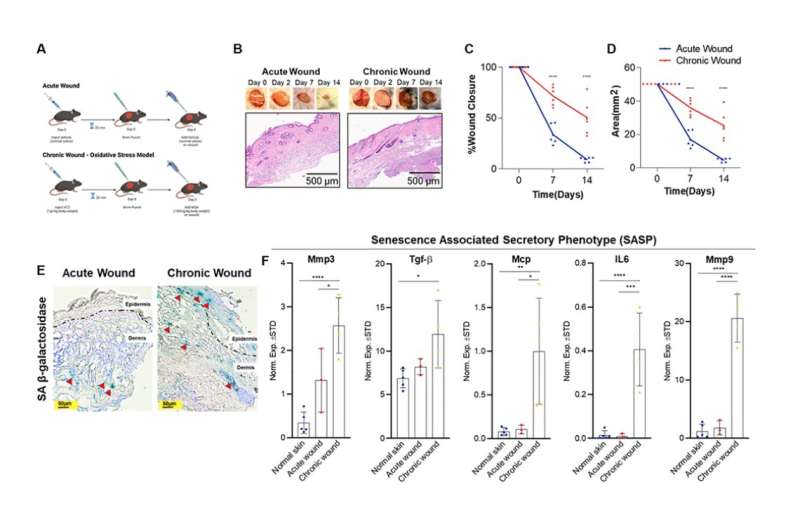This article has been reviewed according to Science X's editorial process and policies. Editors have highlighted the following attributes while ensuring the content's credibility:
fact-checked
proofread
A chronic wound model to investigate skin cellular senescence

A new research paper was published on the cover of Aging, titled "A chronic wound model to investigate skin cellular senescence."
Wound healing is an essential physiological process for restoring normal skin structure and function post-injury. The role of cellular senescence, an essentially irreversible cell cycle state in response to damaging stimuli, has emerged as a critical mechanism in wound remodeling. Transiently-induced senescence during tissue remodeling has been shown to be beneficial in the acute wound healing phase. In contrast, persistent senescence, as observed in chronic wounds, contributes to delayed closure.
In this new study, researchers Saranya P. Wyles, Parisa Dashti, Tamar Pirtskhalava, Burak Tekin, Christina Inman, Lilian Sales Gomez, Anthony B. Lagnado, Larissa Prata, Diana Jurk, João F. Passos, Tamar Tchkonia, and James L. Kirkland from Mayo Clinic in Rochester, Minnesota, describe a chronic wound murine model and its cellular senescence profile, including the senescence-associated secretory phenotype.
"Herein we hypothesize that persistent senescent cell accumulation contributes to delayed healing in chronic wounds," say the researchers.
This study presents a novel oxidative stress-induced chronic murine wound mouse model in which there is capacity to target aberrant senescent cell expression. Pharmacological manipulation of oxidative stress can influence wound healing and result in delayed wound closure, which offers the opportunity to characterize cellular senescence in late stages of wound healing.
The molecular and histological profiles of senescent cells in the epidermis and dermis demonstrate the adverse influence of SASP factors in the chronic wound bed, a new avenue for root-cause, targeted therapeutic interventions.
"To our knowledge, this study is the first chronic wound murine model to profile the effects of the chronic cellular senescence that is linked to delayed wound healing. This may have implications for developing interventions that target cellular senescence for chronic or stalled wounds as a root cause-driven therapeutic strategy," the researchers conclude.
More information: Saranya P. Wyles et al, A chronic wound model to investigate skin cellular senescence, Aging (2023). DOI: 10.18632/aging.204667



















